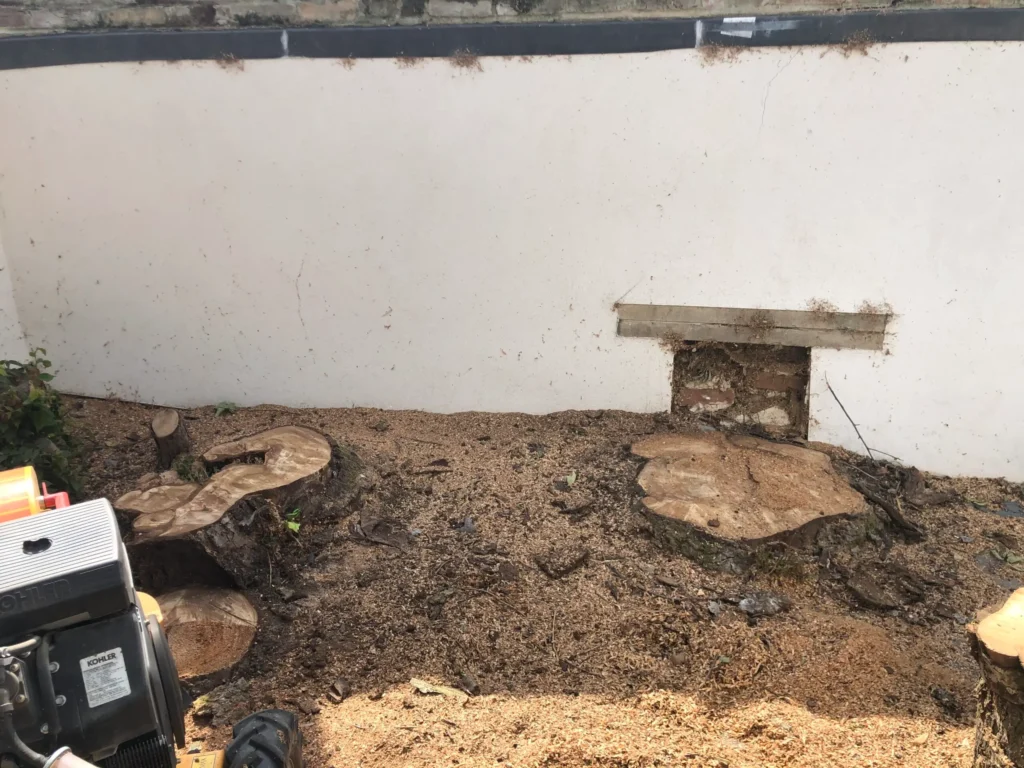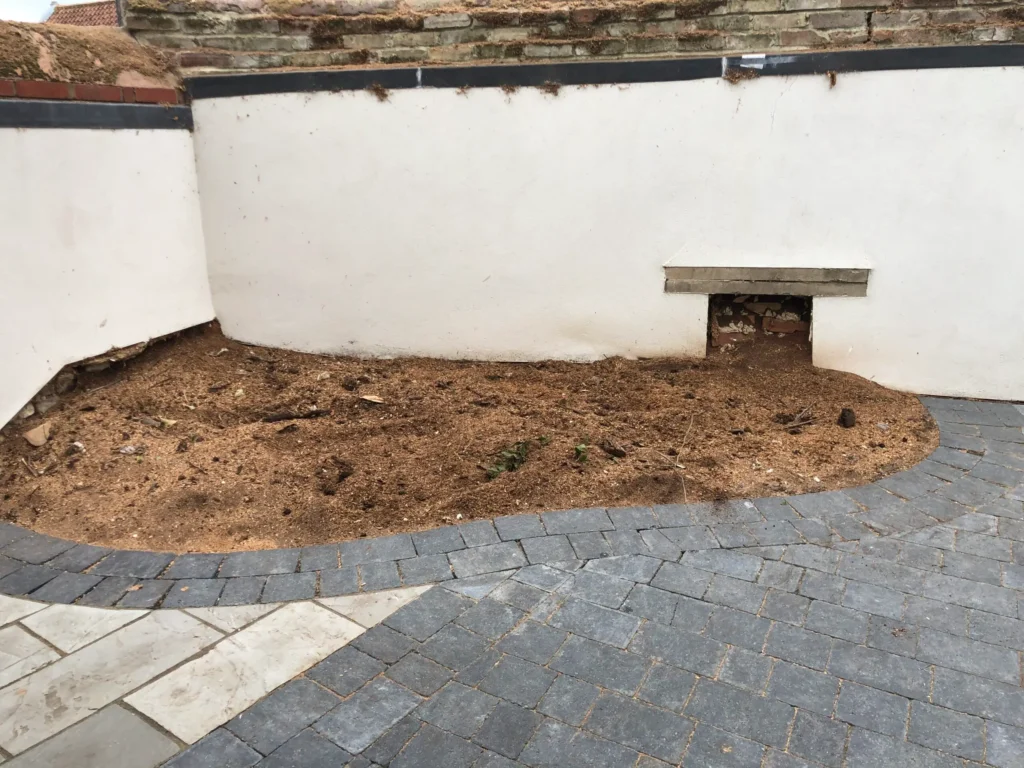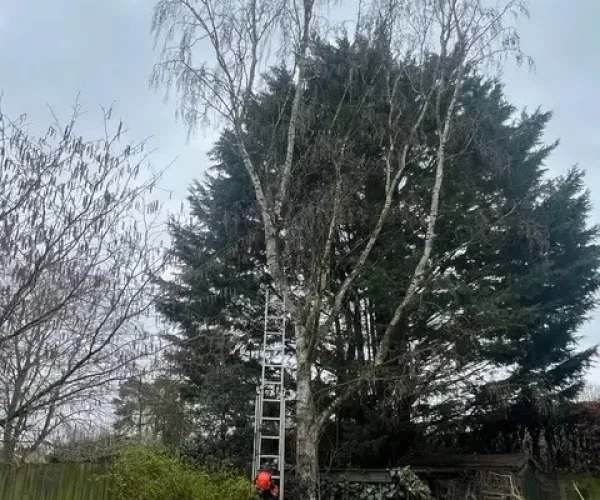After removing a large tree from a local property, our client was left with an unsightly stump taking up valuable garden space. Leaving stumps in lawns or parks isn’t just an eyesore – decaying wood can attract pests and create safety hazards. One arboriculture guideline warns that stumps in urban areas may become nesting sites or food sources for pests and diseases and can pose tripping hazards. Likewise, tree‑care experts note that decaying stumps invite insects such as termites and ants and encourage fungal growth, while also producing new sprouts and causing root problems that interfere with pipes and pavements. For these reasons, our team recommended professional stump grinding.
Why remove tree stumps?
- Prevent pest infestations and disease – Decaying wood is an open invitation for termites, ants, beetles and fungi. These pests can spread to nearby trees and even into homes. Removing the stump eliminates this habitat and helps protect the health of your landscape.
- Avoid regrowth and root issues – Many species re‑sprout from the stump. New shoots compete for water and nutrients, and the remaining roots can continue growing underground and damage pipes, pavements or foundations.
- Remove hazards and liabilities – A stump sticking out of the soil is a tripping hazard, especially in lawns or public spaces. Guidelines for stump treatment emphasise that in urban settings stumps should be removed close to ground level to prevent accidents. If someone is injured, property owners may be liable.
- Free up usable space – Stumps take up valuable space that could be used for new plantings, a patio or other landscaping projects. Removing them makes gardens more functional and attractive.
- Improve kerb appeal and value – An old stump makes a property look neglected and can reduce its market value.
Planning and safety considerations
Stump removal requires careful planning and the right equipment. Arboriculture guidelines recommend assessing the site and planning the operation to prevent hazards to pedestrians, traffic and nearby infrastructure. Before grinding, we:
- Assess the site – We evaluate the stump’s size, location and root spread and check for underground utilities.
- Implement safety measures – We cordon off the area, post warning signs and wear appropriate personal protective equipment. Guidelines emphasise that safety measures should be implemented before stump removal begins.
- Select the appropriate technique – The guidelines list various methods of stump removal (digging, lifting, trenching, grinders and chippers). Grinding is often the most efficient in urban gardens because it removes the stump below ground level without excavating large areas.
Our stump‑grinding process
For this case, the client wanted to reclaim the area for a new flower bed. We used a tracked stump grinder capable of reaching tight spaces and grinding hardwood stumps. The process involved:
- Preparation – We trimmed any protruding roots and cleared debris around the stump.
- Grinding – The machine’s rotating cutting wheel ground the stump down to around 15–20 cm below the soil surface. This depth prevents regrowth and allows the area to be back‑filled.
- Chip removal and back‑filling – We removed the wood chips (which can be composted or used as mulch) and back‑filled the hole with fresh soil, leaving a level surface.
- Site restoration – Finally, we tidied the area and raked over the soil. The client can now replant or turf the area without obstruction.
Results and benefits
By choosing professional stump grinding, the client eliminated a potential hazard and gained usable garden space. The removal prevents future pest and disease problems and avoids regrowth from the stump. The area is now level and ready for landscaping or replanting, improving both safety and aesthetics.


Why choose Top Garden Services?
Top Garden Services is an experienced grounds‑maintenance contractor serving Norfolk, Suffolk and the surrounding counties. Our arborists are fully trained and insured to operate stump‑grinding equipment safely. We:
- Use specialist stump grinders that can access restricted areas and grind hardwood stumps below ground level.
- Follow industry safety guidelines to protect the public and nearby infrastructure.
- Recycle wood chips as mulch or biomass whenever possible.
- Provide a complete service from initial survey to site restoration.
If you have a stubborn stump taking up space in your garden or



